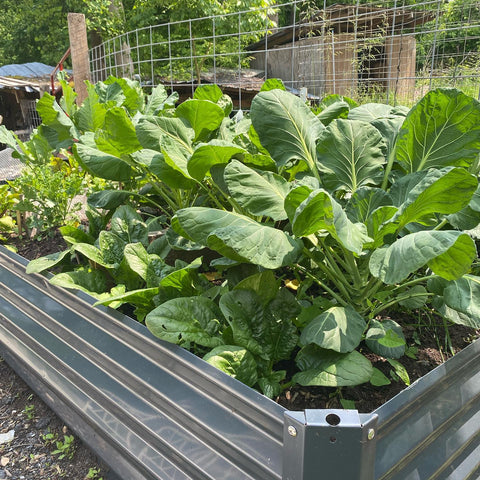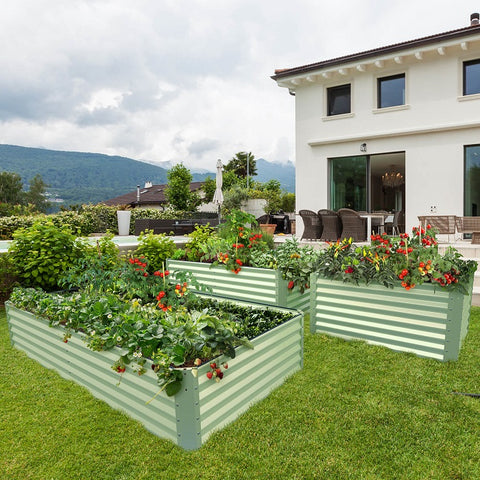Imagine a garden where plants work together in harmony, each one supporting and benefiting the others. This vision becomes a reality with the Three Sisters Garden planting technique, an ancient agricultural practice developed by indigenous peoples in North America. In this comprehensive guide, we will delve into the fascinating world of Three Sisters Gardens, exploring the history, benefits, and how you can create your own thriving interplanted garden at home.

The Tale of the Three Sisters
The story of the Three Sisters Garden is deeply rooted in Native American cultures, particularly among the Haudenosaunee (Iroquois) and various tribes in the eastern woodlands of North America. This sustainable and mutually beneficial planting technique centers around three essential crops: corn, beans, and squash, each playing a unique role in the garden ecosystem.
1. Corn (Maize)
- Corn serves as the "big sister" in this garden trio, standing tall and providing a natural support structure for the beans to climb. Its sturdy stalks create a framework that prevents the beans from sprawling on the ground.
- As corn reaches for the sky, it maximizes sunlight exposure for all three crops, ensuring that each gets its fair share of nourishing sunlight.
2. Beans (Legumes)
- Beans, as the "middle sister," are natural climbers. They wind their way up the cornstalks, utilizing them as trellises. This not only conserves space but also helps stabilize the corn plants.
- Beans are nitrogen-fixing plants, meaning they have the unique ability to convert atmospheric nitrogen into a form that other plants can use. They enrich the soil with nitrogen, benefiting not only themselves but also their corn and squash companions.
3. Squash (Cucurbits)
- Squash, the "little sister," plays a crucial role in this garden ensemble. Its large, sprawling leaves create a living mulch, shading the soil and conserving moisture.
- By covering the ground, squash plants help suppress weeds, reducing competition for water and nutrients. This protective ground cover also deters pests.
- Furthermore, squash plants have prickly stems and leaves, acting as a natural barrier against critters that might otherwise munch on the corn and beans.
Together, these three sisters create a self-sustaining and mutually beneficial ecosystem, exemplifying the essence of companion planting and sustainable agriculture.

The Benefits of Three Sisters Gardening
Embracing the Three Sisters Garden approach offers a multitude of benefits, making it an attractive choice for home gardeners and sustainable agriculture enthusiasts:
1. Sustainable Farming
- Three Sisters Gardens epitomize sustainable agriculture. By planting complementary crops that support each other's growth, this technique minimizes the need for synthetic fertilizers and pesticides.
2. Improved Soil Health
- The rotation of crops and the addition of nitrogen-fixing beans help enhance soil fertility, resulting in healthier and more productive gardens over time.
3. Natural Pest Control
- The prickly squash leaves act as a natural deterrent for common garden pests, reducing the need for chemical pest control methods.
4. Water Conservation
- The living mulch provided by squash plants conserves soil moisture, reducing the frequency of irrigation and water usage.
5. Biodiversity
- Three Sisters Gardens encourage biodiversity by creating a diverse ecosystem within your garden, attracting beneficial insects and pollinators.
6. Traditional and Cultural Significance
- Embracing this planting technique allows you to connect with the rich cultural heritage and traditions of indigenous peoples in North America.
Creating Your Three Sisters Garden
Now that you understand the principles and benefits of Three Sisters Gardening, let's explore how you can create your own thriving garden at home:
1. Select the Right Location
- Choose a sunny location for your garden, as all three sisters require ample sunlight for optimal growth.
2. Prepare the Soil
- Ensure your soil is well-draining, fertile, and free from weeds. Consider adding compost or organic matter to improve soil structure and nutrient content.
3. Plant Corn
- Begin by planting corn seeds in small hills or mounds. Space the mounds about 3 to 4 feet apart to provide enough room for the squash to spread.
- Plant several corn seeds in each mound, as they are wind-pollinated and need to be close together for successful pollination.
4. Wait for Corn Growth
- Allow the corn to grow to a height of about 4 to 6 inches before proceeding to the next step.
5. Plant Beans
- Once the corn has reached the desired height, it's time to plant the beans. Plant bean seeds at the base of each corn plant, spacing them evenly around the mound.
- As the beans grow, they will naturally start to climb the cornstalks.
6. Plant Squash
- Finally, plant squash seeds around the outer edges of the mound. Space them about 2 to 3 feet apart.
- The squash will spread and create a living mulch to cover the soil.
7. Mulch and Water
- Apply a layer of organic mulch, such as straw or leaves, to help retain moisture and suppress weeds.
- Water your Three Sisters Garden regularly, ensuring that the soil remains consistently moist but not waterlogged.
8. Maintenance
- As your garden grows, monitor for any signs of pests or diseases and take appropriate measures to address them.
- Consider providing additional support for the corn stalks if they become top-heavy.
9. Harvest
- Harvest your corn, beans, and squash when they are ripe and ready. Enjoy the bountiful and delicious produce of your Three Sisters Garden.

Variations and Adaptations
While the traditional Three Sisters Garden features corn, beans, and squash, you can adapt this technique to suit your preferences and regional conditions. Here are some variations and adaptations to consider:
1. Crop Varieties
- Experiment with different varieties of corn, beans, and squash to suit your taste and growing conditions. For example, try heirloom varieties for unique flavors and colors.
2. Additional Companion Plants
- Incorporate other companion plants like marigolds to deter pests or herbs like basil to enhance flavor and attract pollinators.
3. Container Gardening
- If space is limited, you can create a smaller version of a Three Sisters Garden in containers or raised beds.
4. Vertical Gardening
- Explore vertical gardening techniques to make the most of limited space. You can train squash and beans to grow vertically on trellises.
Conclusion: Cultivating Connection and Sustainability
The Three Sisters Garden planting technique not only provides a sustainable and efficient way to grow food but also fosters a deeper connection with the natural world and the cultural heritage of indigenous peoples. By embracing this ancient practice in your own garden, you not only reap the rewards of fresh, homegrown produce but also contribute to the preservation of a traditional and environmentally friendly approach to agriculture. So, go ahead and cultivate your own Three Sisters Garden, and discover the beauty of harmony in gardening.









